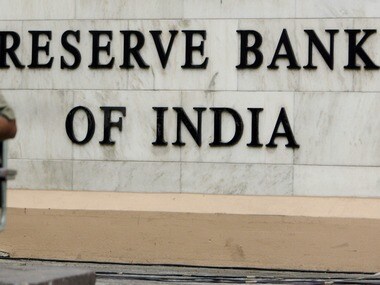Mumbai: The Reserve Bank of India (RBI) will allow banks and non banking financial companies (NBFCs) to set up Infrastructure Debt Funds (IDFs) to accelerate and broaden the funding sources for the country’s huge infrastructure spend plans.
Finance Minister Pranab Mukherjee, in the budget for fiscal year 2011-12, announced the setting up of IDFs to source long-term debt from both foreign and domestic investors, and also eased taxation rules to make IDFs more attractive to off-shore funds.
[caption id=“attachment_91181” align=“alignleft” width=“380” caption=“Reserve Bank of India. Reuters”]
 [/caption]
[/caption]
The RBI, in rules released Friday, said that IDFs can be set up as mutual funds and NBFCs.
However, it said that banks have to stick to the current caps for investment limits in financial services companies and capital market exposure while floating IDFs.
“It gives the flexibility to set up a fund and take money from other players, and some of your exposure you can look to reduce by doing take-out financing,” R K Bansal, Executive Director, IDBI Bank said, who is working on setting up an IDF.
“It can help banks to reduce exposure to the infrastructure sector.”
Commercial banks face difficulties in lending to infrastructure projects that have long payback periods as they mostly lend short-term funds, which creates an asset liability mismatch. Most banks are also nearing the maximum limit that they can lend to the infrastructure sector.
The government hopes to attract insurance and pension funds into the sector, which globally provides a key funding source for the infrastructure sector.
India may miss a $500 billion target for infrastructure investment for the five years through 2012 by 10-12 percent, Montek Singh Ahluwalia, deputy chairman of India’s Planning Commission said last week.
The country has a more ambitious aim to spend $1 trillion for the five years that end March 2017.
IDFs will form a key part of that. “We need several $10 billion funds. I expect at least two ($10 billion funds) to start off (in the current fiscal year),” Ahluwalia said.
NBFCs, which want to sponsor an IDF through the mutual fund route, need to have been operating for five years and earning profits for three years. They should have minimum net-owned funds of 3 billion rupees and a capital adequacy ratio of 15 percent, the RBI said.
The non performing assets of the NBFC should be less than three percent of the net advances, the central bank said.
Banks or other firms who want to sponsor IDFs through the NBFC route will have to contribute a minimum equity of 30 percent and a maximum equity of 49 percent in the new entity.
The IDF set up through the NBFC route must have net owned funds of 3 billion or above. It should be assigned a minimum credit rating ‘A’ and minimum capital adequacy should be 15 percent of risk weighted assets.
India’s top state-run infrastructure financing company India Infrastructure Finance plans to set up an IDF and has chosen to take the NBFC route.
“We are targeting above 5000 crore ($1 billion), but it will depend on what the actual amount the government will permit us,” a company source said.
“This money will be raised through various investors like Life Insurance Corp., banks, our own contribution and we may rope in some foreign investors who can give some long-term investments for this debt-fund.”
Reuters
)